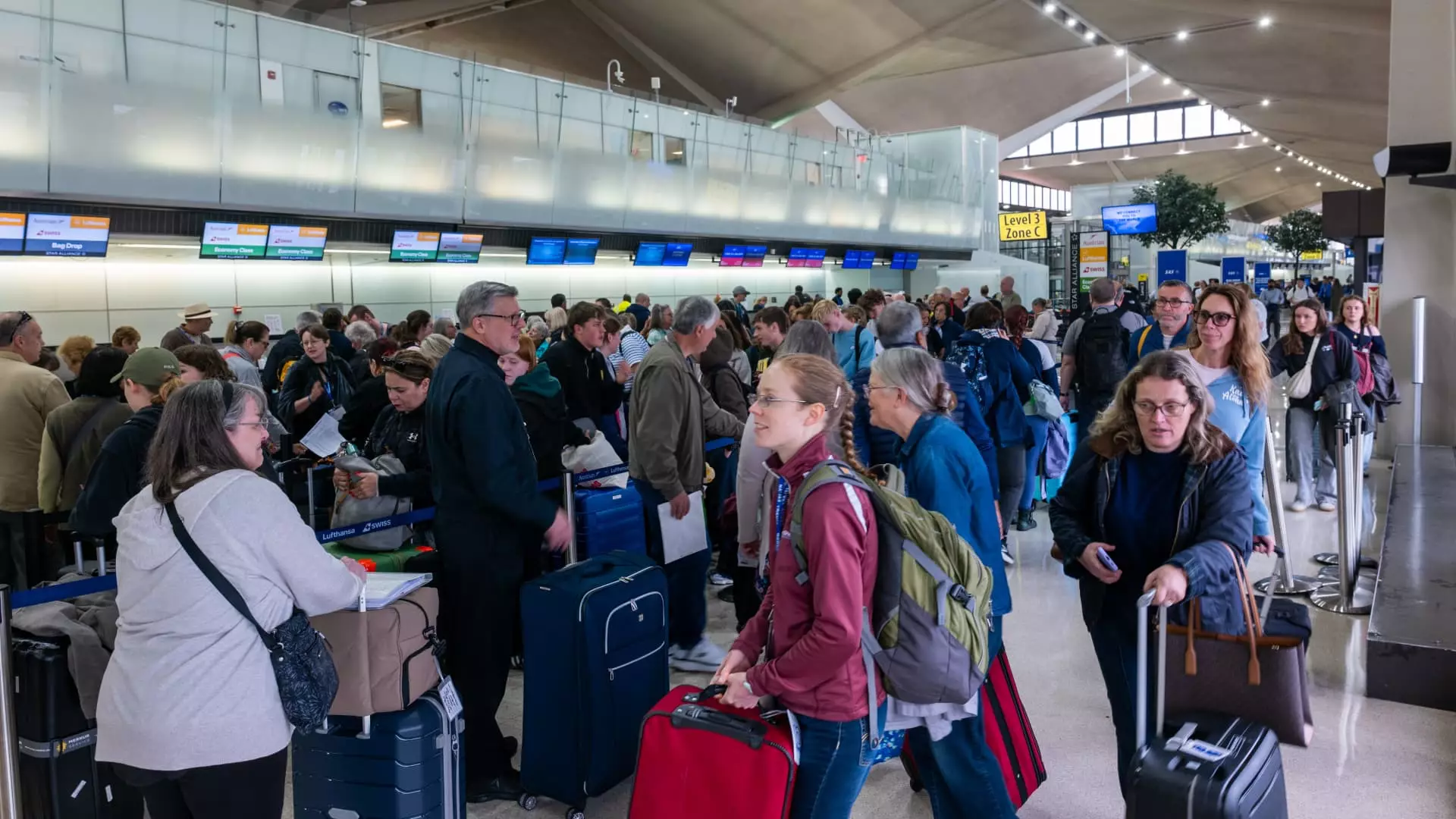Last week, Newark Liberty International Airport—the gateway to millions—became a glaring example of the failures plaguing the United States’ air traffic management system. The National Air Traffic Controllers Association (NATCA) reported a severe outage that left air traffic controllers disconnected from aircraft for an agonizing 90 seconds. This was not just a minor technical hiccup; it was the culmination of years of neglect and mismanagement that led to over 1,500 flight delays. This incident serves as a wake-up call about the dire state of our aviation infrastructure, one plagued by outdated technology and alarming staffing shortages.
While it’s easy to point fingers at a single event, this outage exposes fundamental issues that stretch far beyond Newark. An air traffic control system that is antiquated and underfunded cannot adequately support the complexities of modern air travel. As the Federal Aviation Administration (FAA) struggles to maintain functionality, it becomes clearer that the nation’s capacity to manage air traffic is indeed teetering on the brink of failure. The chaos wasn’t just confined to Newark; it rippled through air travel networks across the United States, highlighting a crisis that is both national and systemic.
A Conspiracy of Complacency and Cuts
The shocking reveal of over 20% of Newark’s air traffic control staff taking time off to recover from stress underscores a chilling concern: the emotional and psychological toll of continual equipment failures and understaffed control towers. It’s particularly frustrating to learn that the union clarified these were not walkouts, but rather necessary leaves of absence due to traumatic workplace conditions. How have we reached this point where our essential workforce is crumbling under the pressure of simply managing their responsibilities?
The Trump administration did little to alleviate these issues, instead opting for band-aid solutions that failed to address the core problem—staff retention and recruitment. This chronic underfunding and mismanagement have created not just a temporary crisis, but a breeding ground for ongoing issues. Unsurprisingly, United Airlines announced it would cut 35 flights daily from Newark as a palliative measure to alleviate the chaos, a clear admission of the air traffic control nightmare that has spiraled out of control.
Broken Promises and Ineffective Leadership
While the FAA attempts to assure the public that the airspace remains “safe,” such assertions feel hollow when you consider the systemic breakdown in communication and functionality that has characterized our airports. Transportation Secretary Sean Duffy’s promises of a “brand new air traffic control system” resonate as mere rhetoric until we see real investment that matches the promise of improvement. In a world where rapid technological advancements are the norm, our air traffic systems seem to be stuck in a time warp, failing to evolve alongside the industry itself.
The Port Authority of New York and New Jersey has poured billions into modernizing Newark Liberty, yet without a functional air traffic management system, these investments feel almost futile. Existing conditions compel New Jersey Governor Phil Murphy to demand more attention from federal authorities: “It is apparent neither effort has led to the desired outcome.” His concerns echo a wider alarm that reverberates through the travel industry, especially as major events like the World Cup Finals loom on the horizon. If these systemic failures continue, travelers can expect not just inconvenience, but a potential diplomatic embarrassment on a global stage.
From Crisis to Transformation: A Call for Action
In this crisis, we must not only critique the failures but also call for actionable reforms. The aviation industry requires a strategic overhaul that addresses both technology and staffing complexities. The FAA needs a robust hiring and training program designed to build a resilient workforce capable of handling today’s air traffic volumes rather than merely responding reactively to crises. Investing wisely in modern technology infrastructure, staffing, and streamlined communication could win back the confidence of an increasingly wary public and ensure that airports like Newark don’t become synonymous with chaos.
As we tread into an uncertain future of air travel, we ought to recognize that the current situation is not merely a technical issue; it is a societal concern that reflects a failure of leadership at multiple levels. We are not just flying in planes; we are entrusting our safety and well-being to a system fraught with vulnerabilities. It is high time for government stakeholders to take their responsibilities seriously and commit to meaningful reform that prioritizes safety, efficiency, and reliability in America’s aviation landscape.

